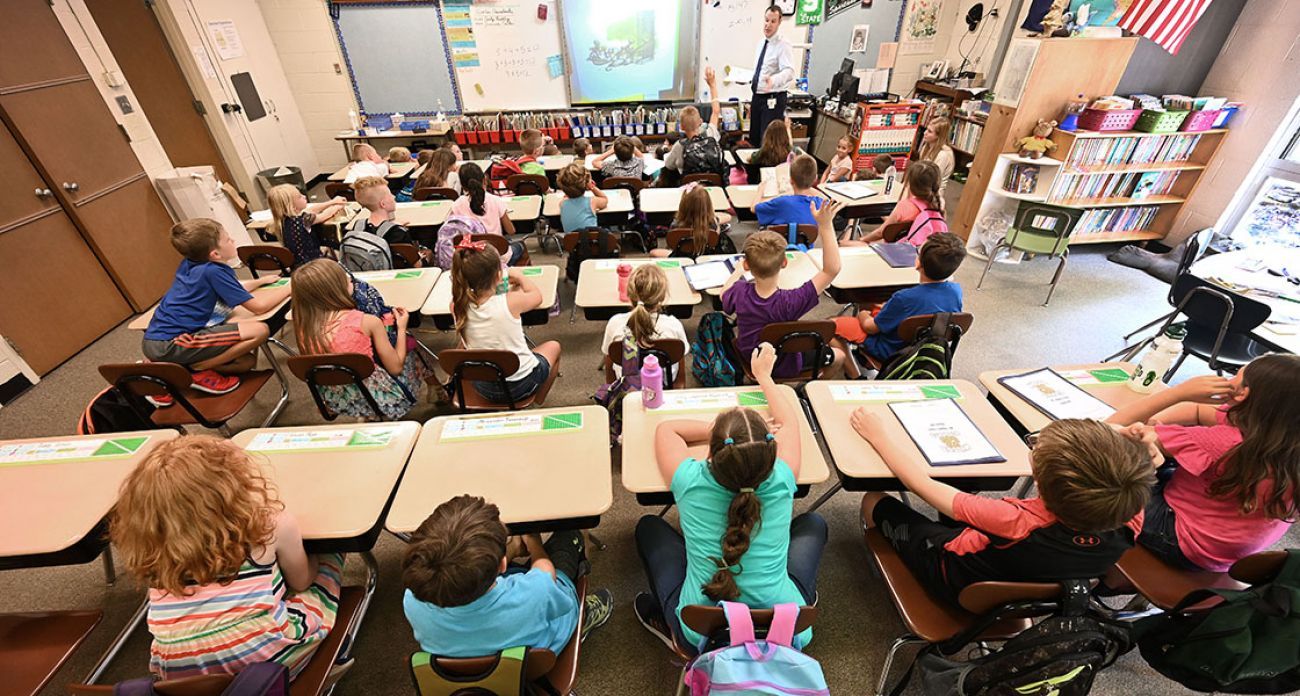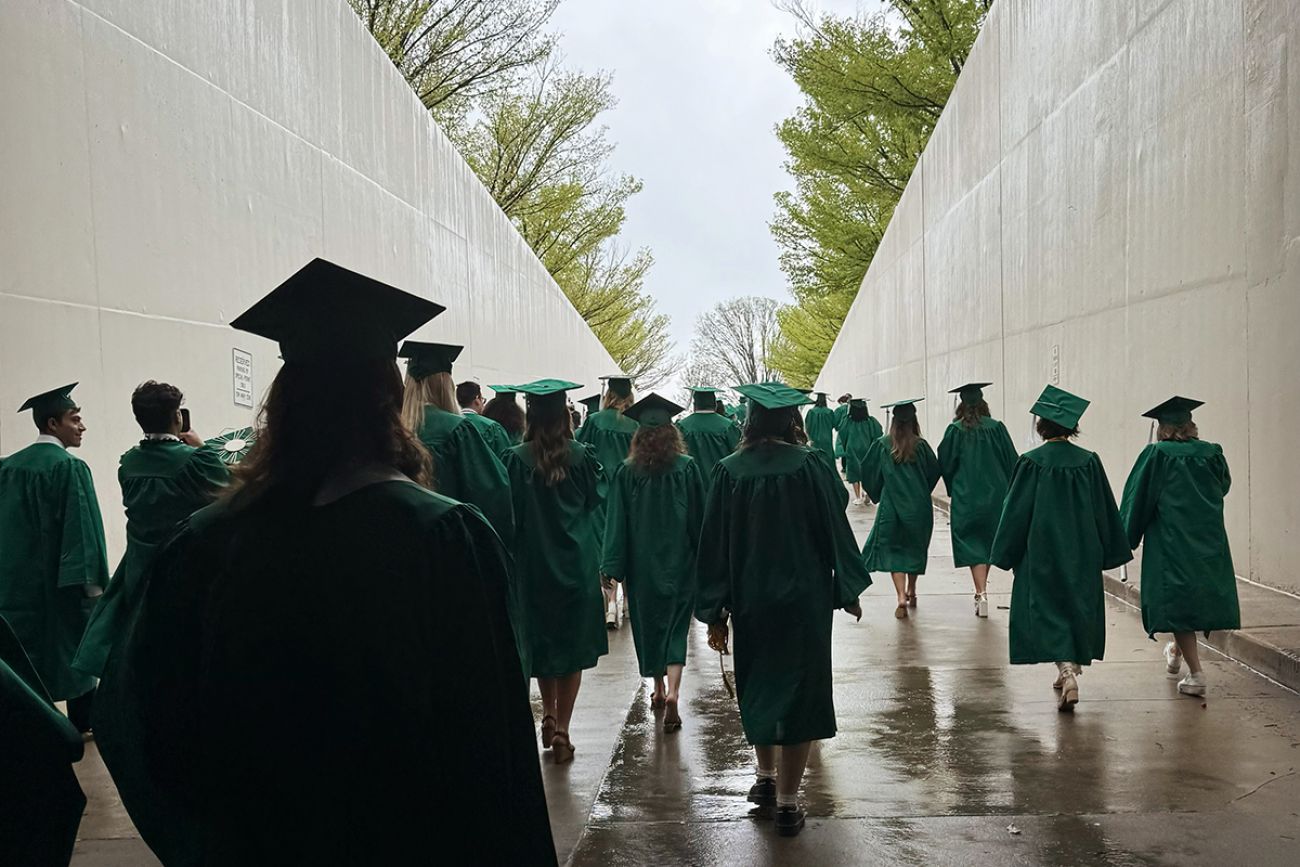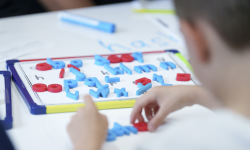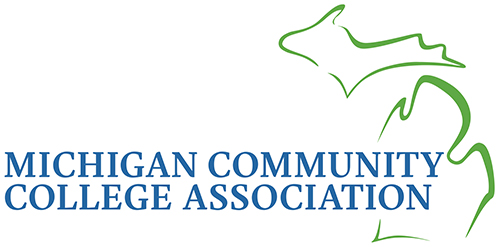Fact check: What’s true, false, misleading about Michigan’s education slide

- There are plenty of theories for why Michigan scores have slipped. Most aren’t wholly true.
- From funding to choice and more, other states face same factors and score better
- Here’s what’s true, what’s false and incomplete about schools
Most Republicans and Democrats agree that Michigan schools are underperforming. But there’s little consensus as to why.
At a recent House Oversight Committee, some Republicans blamed COVID restrictions and limits on school choice. Democrats pointed fingers at school funding.
But an analysis by Bridge Michigan found that many of the reasons frequently offered for the state’s floundering schools are likely wrong, or are, at best, only contributing factors.
Michigan education crisis
Despite more money, more staffing and years of attempted reforms, Michigan schools are sliding farther behind other states in key educational outcomes. One Michigan education leader called it a “moment of reckoning,” and many candidates who have announced plans to run for governor in 2026 are making education reform a key to their campaigns.
Throughout 2025, Bridge Michigan will chronicle how we reached this crisis point, the impact of our learning slide, and what we can learn from other states.
There are states that out-perform Michigan that spend less money on schools, kept students out of school longer during the pandemic and have both less and more school choice.
Here’s a look at common explanations — and what the facts say — surrounding Michigan’s educational performance.
Money
The claim: Low school funding leads to worse test scores.
Context: Democrats and many education leaders argue that Michigan schools were underfunded for years and, though money has increased recently, more investment is needed.
“Nothing frustrates a school administrator more than the phrase ‘record funding,’” said Robert McCann, executive director of the K-12 Alliance of Michigan. “It can be true that there is at least one more dollar in the budget than there was last year, but it can also be very true that we are massively underfunding public education.”
Related:
- Michigan spent big to fix schools. The result: Worse scores and plenty of blame
- Mississippi turned around its schools. Its secret: Tools Michigan abandoned
The facts: Michigan districts spent an average of $17,535 per student on K-12 education in 2022-23, according to U.S. Census data. That’s in the top half of states — 17 spent more per pupil, 32 spent less.
While 16 of the 17 spending more have higher fourth-grade reading scores, so did 27 of the 32 states that spent less, including South Dakota, Virginia, Colorado and Indiana, which spent about $4,400 less per pupil.
What research says: Studies show increased school funding can improve test scores, if the money is targeted and there is tight control over how it is spent. One national study estimated that four consecutive years of increased school spending results in higher test scores.
Read more: Student outcomes: Does more money matter?
COVID
The claim: The pandemic, and how Michigan responded, is responsible for bad test scores
Context: Conservatives often criticize Gov. Gretchen Whitmer for suppressing learning by keeping schools closed during the pandemic.
“Gretchen Whitmer’s unscientific school closures have devastated our kids,” said Beth DeShone in 2024, when she was executive director of school choice advocacy group Great Lakes Education Project. “We don’t do ourselves any favors by … allowing Whitmer, the state Board of Education, and other lockdown advocates to duck responsibility for the harm they’ve caused our kids.”
The facts: During the 2020-21 school year, Michigan students, on average, spent 62% of the school year learning remotely or in a hybrid, remote-and-in-person schedule, according to Harvard University’s Education Recovery Scorecard.
Michigan was middle-of-the-road for school closures. There were 28 states where students remained out of classrooms longer than those in Michigan.
Among those, 23 had less learning loss in reading than Michigan, according to a national report studying learning recovery. Students in Illinois, Colorado and New Hampshire all had longer periods of restriction yet had less than half the learning loss of Michigan.
What research says: Remote learning during the pandemic negatively impacted learning across the US, as all states saw a decline in NAEP scores. While Michigan and the majority of states continue to have scores lower than before COVID, Illinois, Mississippi and Louisiana are outpacing their pre-pandemic achievement in reading.
Read more: Survey of studies concludes shutdown hurt academics
Annie E. Casey Foundation report on learning loss
Poverty
The claim: Michigan’s scores are low because we have more low-income students.
Context: Some have argued that Michigan’s test scores are low because of the high number of children in poverty, and Michigan has several large cities with high concentrations of low-income families.
The influence of poverty and family has a huge impact on learning, former Interim State Superintendent Sheila Alles told Bridge Michigan in 2019. “Poverty matters,” she said.
The facts: Nearly half of Michigan’s K-12 public school students, 48.2%, are eligible for a subsidized lunch, a marker of being considered economically disadvantaged.
Still, 24 states have higher rates of student poverty than Michigan, and among those, 18 had better scores on the fourth grade reading test, including Florida (60.1% economically disadvantaged), Indiana (49.2%) and Kentucky (56.7%).
All of the 25 states with less poverty had higher scores, including Ohio (47.6% economically disadvantaged), Pennsylvania (45.9%) and Hawaii (48.1%).
What research says: Studies show that higher-income families can provide more learning opportunities for their children, which leads to higher academic achievement. Some states have narrowed the achievement gap by investing in additional professional development for teachers in low-income schools, and initiatives to address housing and food insecurity.
Read more: How much does family income matter?
Education Commission of the States report on achievement gap
‘Purple’ state
The claim: Michigan’s closely-divided partisan makeup throttles reform.
Context: Some education leaders say Michigan bouncing between Republican and Democratic control in Lansing leads to fluctuating education policies.
“As a rule, when people start suggesting what we should do, they point to red or blue states and not purple states,” said Michigan State Superintendent Michael Rice. “It's a different gig in a purple state.”

The facts: It’s true that Michigan has toggled between reforms mandated by state leadership. One example: a Republican-controlled Legislature passed a tough third-grade reading law in 2016, which took effect in 2021. In 2023, Democratic governor Gretchen Whitmer signed a law, passed by a Democratic-controlled Legislature, that repealed the read-or-flunk rules.
And it’s true that one party controls two states touted for education reforms and systems: Mississippi, long led by Republicans, and Massachusetts, a Democratic stronghold.
Still, students in other purple states are learning more than Michigan children, as measured by NAEP, including Wisconsin, Virginia and Pennsylvania.
What research says: NAEP scores for students in political swing states tend to fall in the middle range compared to those in conservative and liberal states. In 2019, fourth-grade reading scores were highest in blue states, lowest in red states, and in the middle for purple states; in fourth-grade math, purple-state students fared the best.
Students in conservative states had less learning loss than those in the rest of the country.
Read more: Report: Red states had less learning loss
Unions
The claim: Michigan’s powerful teacher unions oppose accountability measures and keep bad teachers on the job.
Context: Republicans argue the Michigan Education Association and the American Federation of Teachers Michigan hold too much sway over reform efforts, through donations to Democratic lawmakers.
“As they hand out favors and power to their union boss allies, Michigan Democrats are continuing to undermine public education and put the needs of students last,” said House Speaker Matt Hall, R-Richland Township, said in 2023.
The facts: Michigan is one of 35 states that by state law allow teachers to unionize and collectively bargain, according to a 2022 report from the National Education Association. Of those 34 states, 30 fare better than Michigan on the NAEP, including North Dakota and Wisconsin.
Only six states, all in the South, ban collective bargaining, and all of them have higher NAEP fourth grade reading scores, including Georgia and South Carolina.
What research says: There isn’t a clear answer in data about what impact, if any, unions have on student achievement. One study found no difference in achievement between states with strong teacher unions and those with weak unions.
Read more: WE Upjohn study unions and student performance
Study on of unions on school district finance and achievement
Parents
The claim: It’s not the schools, it’s the parents’ education.
Context: School success is determined more by the education level of parents than by any particular curriculum, and Michigan has below-average college attainment.
The facts: Michigan ranks 34th in the percent of adults (25 and older) who have a bachelor’s degree or better, according the US Census. The state’s rate is 32.7%, well below the 36.2% national rate.
That matters because, on average, students whose parents went to college tend to perform better academically.
But of the 16 states with a lower college attainment rate than Michigan, 12 scored better on the NAEP, including Mississippi (25.5% have a bachelor’s degree or higher), Wyoming (30.4%), Ohio (32%) and Idaho (32.1%).

What research says: It’s true that children of parents with college degrees tend to fare better in school and attend college themselves at higher rates. On average, parents who attended college tend to value education more than those who went straight into the workforce from high school.
Read more: EPIC study on achievement grants
Pew: Adults whose parents got degrees enjoy more success
School choice
The claims: State funds for private and religious schools would either help or hurt Michigan academic achievement, depending on which political party you belong to .
Context: Republicans say that limitations on school choice trap students in poor-performing public schools.
“Our government-run educational system is devoid of freedom. Your child is assigned to a school based on where you live, and it’s hard to change to a different one – unless you can afford to buy your way out,” writes Michigan resident Betsy Devos, former U.S. Education Secretary and a longtime advocate for school choice.
Many Democrats say voucher programs, which either give money to private schools or offer tax credits for enrollment, lack sufficient transparency and oversight and take money away from public schools, which they argue can hurt learning..
“Every voucher scheme enacted siphons money away from public schools so students can attend private or religious schools on the taxpayer dime,” said Sen. Dayna Polehanki, D-Livonia.
The reality: Of the 15 states where more than 10% of students can use “choice” programs to access tax dollars to attend private schools,11 had students score higher in 4th reading, including New Hampshire, Indiana, Florida and Ohio. Two of the states where all students able to enroll in private schools, Alaska and West Virginia, scored lower.
While vouchers don’t exist in Michigan, students can choose between charter schools and traditional schools outside of their home districts. Nearly 11% of Michigan’s public school students attend charter schools, over 150,000 students statewide, and 1 in 4 students attend a charter or traditional school outside of their home district.
What research says: Students who transferred out of their district to another traditional school or a charter school didn’t experience a learning increase or decrease, according to a 2017 Michigan study. Voucher programs for private schools also don’t appear to change learning outcomes, according to a Stanford University study.
Read more: Michigan study on choice and achievement
Voucher programs do not improve student achievement
Chronic absenteeism
The claim: Michigan test scores suffer because of high absenteeism rates
Context: Politicians and education leaders agree that Michigan’s high level of chronic absenteeism weighs down academic achievement. “Our students need to attend school regularly to maximize their school experiences,” said state Superintendent Michael Rice.
The reality: In 2023-24, just under 30% of Michigan’s K-12 public school students were considered chronically absent, which means they missed at least 10% of the school year. In Michigan, that’s 18 days or more.
That’s one of the highest rates in the country; in 2022-23, the latest year for state-by-state comparisons, 41 states had lower absenteeism rates — and all but three had higher scores, including Great Lakes states Illinois (28.3% chronically absent), Ohio (26.5%), Minnesota (25.6%) and Pennsylvania (22.1%), according to data compiled by the Education Recovery Scorecard, a consortium of academic researchers.
But even among states with high absenteeism rates, Michigan doesn’t do well. Five of the eight states with higher absentee rates than Michigan also scored better.
What research says: Chronic absenteeism lowers student achievement, according to studies. Some studies show even students with good attendance records are harmed academically if they attend schools with high absenteeism rates.
Read more: Study on absenteeism and outcomes
Attendance Works study on absenteeism’s effects on rest of school
Governance
The claim: Michigan’s disjointed command and control of education policy makes reform difficult.
Context: There’s no one person or group in charge of Michigan schools. The Legislature has power of policy and holds the purse strings; the Michigan Department of Education is charged with applying laws and the elected State Board of Education supervises education and appoints a state superintendent. The governor has no direct role in overseeing education, with the state school superintendent appointed by the State Board, one of just seven such states.
“It’s no one person’s fault — the systems don’t interact well with each other,” said Dave Campbell, superintendent of River Valley School District in Berrien County and former superintendent of Kalamazoo Regional Education Service Agency. “Our system of governance was designed for local control in a time when we didn’t care if children learned, they could drop out and go down to GM and get a job.”
The reality: Michigan’s system of education governance has been in place since 1963 and had far higher test scores during that time. Michigan is one of seven states where a majority or all of the members of the state board of education are elected, and the board appoints the state superintendent. The other six have higher NAEP fourth-grade reading scores, including Colorado, Utah and Louisiana.
Research: A 2013 study found that strong centralized governance of education was linked to higher student achievement.
Read more: Centralized governance and student outcomes
What about ‘all of the above’?
The claim: Michigan is unique in the number of obstacles it faces.
Context: Many states have overcome singular issues that Michigan’s schools face, but the combination of so many challenges makes it more difficult for the state to improve learning.
“There’s the compounding impact of multiple things in a Michigan-specific stew,” said Venessa Keesler, former deputy superintendent at the Michigan Department of Education and now president of education advocacy group Launch Michigan. “There’s something about the combination that makes it hard.”
The reality: No states have a combination of Michigan’s level of unique challenges, including low-income students, chronic absenteeism, length of time out of classrooms for the pandemic, per-pupil funding levels, disjointed governance structure and swing-state politics.
That said, Nevada has four of those five obstacles, and has higher fourth-grade reading scores. Georgia, North Carolina and Nevada all have higher poverty rates and spend less per-pupil than Michigan — and each had higher reading scores. Wisconsin spends less and does better — but also has a far lower chronic absentee rate (19.5% compared to 30.8% for Michigan.
Michigan Education Watch
Michigan Education Watch is made possible by generous financial support from:
Subscribe to Michigan Education Watch
See what new members are saying about why they donated to Bridge Michigan:
- “In order for this information to be accurate and unbiased it must be underwritten by its readers, not by special interests.” - Larry S.
- “Not many other media sources report on the topics Bridge does.” - Susan B.
- “Your journalism is outstanding and rare these days.” - Mark S.
If you want to ensure the future of nonpartisan, nonprofit Michigan journalism, please become a member today. You, too, will be asked why you donated and maybe we'll feature your quote next time!






